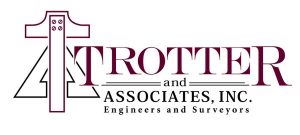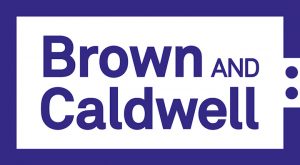 Join CSWEA
Join CSWEA
2018 Education Seminar Papers & Proceedings
2017 Education Seminar Papers & Proceedings
| Agenda. | |
| Brochure. |
| Flexibility and Adaptability are the Essential Elements of the Water and Resource Recovery Facility of the Future . |
| Maximizing Microorganism-Based Energy Resources from Used Water. |
| Should Anaerobic Treatment Replace Activated Sludge. |
| Why do we Strive to be a Utility of the Future. |
| Engaging the Organization and Region in the Transformation to Utility of the Future. |
| How Do We Use the Water We Produce. |
| Recovering the Lost P in Used Water. |
| Energy Sustainability. |
| The Leading Edge of Phosphorus Recovery: A Brushite Recovery Pilot. |
| Nutrient Removal and Activated Sludge from BPR to Anammox – James Barnard. |
| National Nutrient Regulatory Perspectives – David Clark. |
| Nutrient Water Quality Standards in Illinois – Bob Mosher. |
| Minnesota’s Eutrophica1on Story – Katrina Kessler. |
| Update – Wisconsin’s “Statewide” Variance Analysis – Amanda Minks. |
| One Sentral States Sludge Shoveler’s Short, Sad Soliloquy – Rick Manner. |
| Fermentation Technology to Improve Biological Phosphorus Removal – James Barnard. |
| Opportunities and Challenges of Struvite Harvesting – Alan Grooms. |
| From High-Rate Treatment Wetlands, Low to No Energy Nitrification and Deammonification: Lessons Learned – David Austin. |
| Evaluating the Options for Phosphorus Compliance – Jane Carlson. |
| Seminar Proceedings. |
| Activated sludge settling problem resolved. |
| Activated Sludge Workshop. |
| Drought Settling Concerns. |
| Emerging Diagnostics – A Sneak Peak at How. |
| Floc Formation Jeff Mac MWIE Feb 2014. |
| Use of ATP to identify poor-performing filters. |
| 2013 Education Seminar Presenations. |
| Two-Point Titration Method For Alkalinity Determination. |
| Madison Metropolitan Sewerage District Foam Studies Update. |
| Prabhushankar Chandrasekeran, P.E.. |
| Determination of Alkalinity by Titration (Short Method). |
| Measuring anaerobic sludge digestion and growth by a simple alkalimetric titration. |
| Full Scale Case Studies. |
| Anaerobic Digester Foaming – Prevention and Control Study Update. |
| 17th Annual Education Seminar Proceedings. |
| The Future of Activated Sludge. |
| At the Confluence of Nutrients, Pharmaceuticals and Sustainability: Emerging Issues in Managing Wastewater. |
| Key Elements and Bottlenecks of the Membrane Bioreactor (MBR) Process for Advanced Wastewater Treatment. |
| Operating Tools and Measurement Techniques for Troubleshooting Activated Sludge Systems. |
| IFAS – A Broomfield, Colorado Success Story with Lessons Learned. |
| Energy Savings through Improved Aeration Efficiency. |
| Comparing the Effectiveness of Aeration Control Systems for BNR Plants. |
| Effluent Reuse: Putting the Pieces Together. |
| A Case for Keeping High-Rate Auxiliary Treatment Facilities in the Secondary Treatment Picture. |
| Anaerobic Digester Foaming Workshop |
| Case Studies – Rusty Schroedel. |
| Case Studies – Bill Marten. |
| The Madison Metropolitan Sewerage District Foam Experience. |
| WLSSD Digester Foaming experiences. |
| Engineering a rain garden to control road run-off in Scanlon Creek and an assessment of rain gardens as the best storm water management practice-Phase IV. |
| Bench-scale Study of Anaerobic Digester Foaming. |
| Anaerobic Digester Foaming – Past, Present, and Future. |
| Survey Results. |
| The effects of different genera of algae on the phosphorus excretion and oxygen depletion of Quagga Mussels (Dreissena Bugensis). |
| Optimization of phosphorus and magnesium release from waste activated sludge. |
| Caution-Advanced Digestion Processes. |
| Managing Biosolids in our Energy Conscious Era. |
| Agenda. |
| Notes. |
| Supplemental Notes. |
| Agenda. |
| Nutrient Removal: Understanding the Issues…Achieving Sustainable Solutions. |
| Digester Foaming Committee Meeting Notes 2.1.2009. |
| Activated Sludge- It’s About Efficiency and Optimization. |
| Research and Reality: Current Issues in Solids Processing. |
| Optimizing Biological Nitrogen Removal Processes. |
| Control of Struvite Deposition in Wastewater Treatment Plants. | |
| Nitrification Options for Small Communities Using “Appropriate Technology.” | |
| Restored Wetlands as Nutrient Farms. |
| Sidestream Treatment for Nitrogen Removal. |
| Evaluation of Alternative Technologies for Upgrading Wastewater Treatment Plants in Minnesota for New Phosphorus Limits. |
| Low D.O. Operation: Effects on Biological Phosphorus Removal, Oxygen Transfer Efficiency, Denitrification, and Energy Savings. |
| The Coastal ‘Dead Zone’: Nutrients, Hurricanes, & Gulf of Mexico Hypoxia. |
| Effects of Biological Phosphorus Removal on Plant Operations and Capacity at the Nine Springs WWTP. (2005 Radebaugh Award Winner) |
| The Use of Barley Straw to Control Algal and Macrophyte Growth on Wild Rice Lake Pre and Post-eutrophic Conditions.
This five-year-study, which has extensively investigated the effect of barley straw on algae, was taken into the field for the second time in Wild Rice Lake a shallow, 2100-acre lake north of Duluth, Minnesota. June 1, 2005 – Elizabeth Welsh, Minnesota. |
| Bioremediation of Groundwater Contaminated With Agricultural Chemicals.
This study was conducted to investigate the effectiveness of a biofilter for reducing, and maybe even eliminating contaminants in groundwater. May 22, 2005 – Paul Davidson |
| Extreme Activated Sludge: What’s out there now? |
| Escherichia v. Fecal Coli White Paper.
Escherichia coli and Fecal Coliform Populations in Disinfected Municipal Wastewater Treatment Plant Effluent and Recommendations to DNR for a Monthly Geometric Mean Escherichia coli Limitation. December 1, 2004 |
| Implementation and Operation of Illinois’ First Nitrifying Biological Aerated Filter. (2004 Radebaugh Award Winner) |
| Beneficial Use of Biosolids: Total Nitrogen Removal in a Completely Mixed Membrane Biofilm Reactor for Nitrification and Denitrification. Jennifer Cowman |
| Word Version |
| Beneficial Use of Biosolids: Strategies for Success and Acceptance (Presented at the 2004 Central States WEA Education Seminar) |
| A Constant SRT Calculated From Liquid Flows Improves BNR Activated Sludge Performance(2002 Radebaugh Award Winner) |

To provide a Water Environment Federation (WEF) organization (Illinois, Minnesota, Wisconsin) offering multiple opportunities for the exchange of water quality knowledge and experiences among its members and the public and to foster a greater awareness of water quality achievements and challenges.




